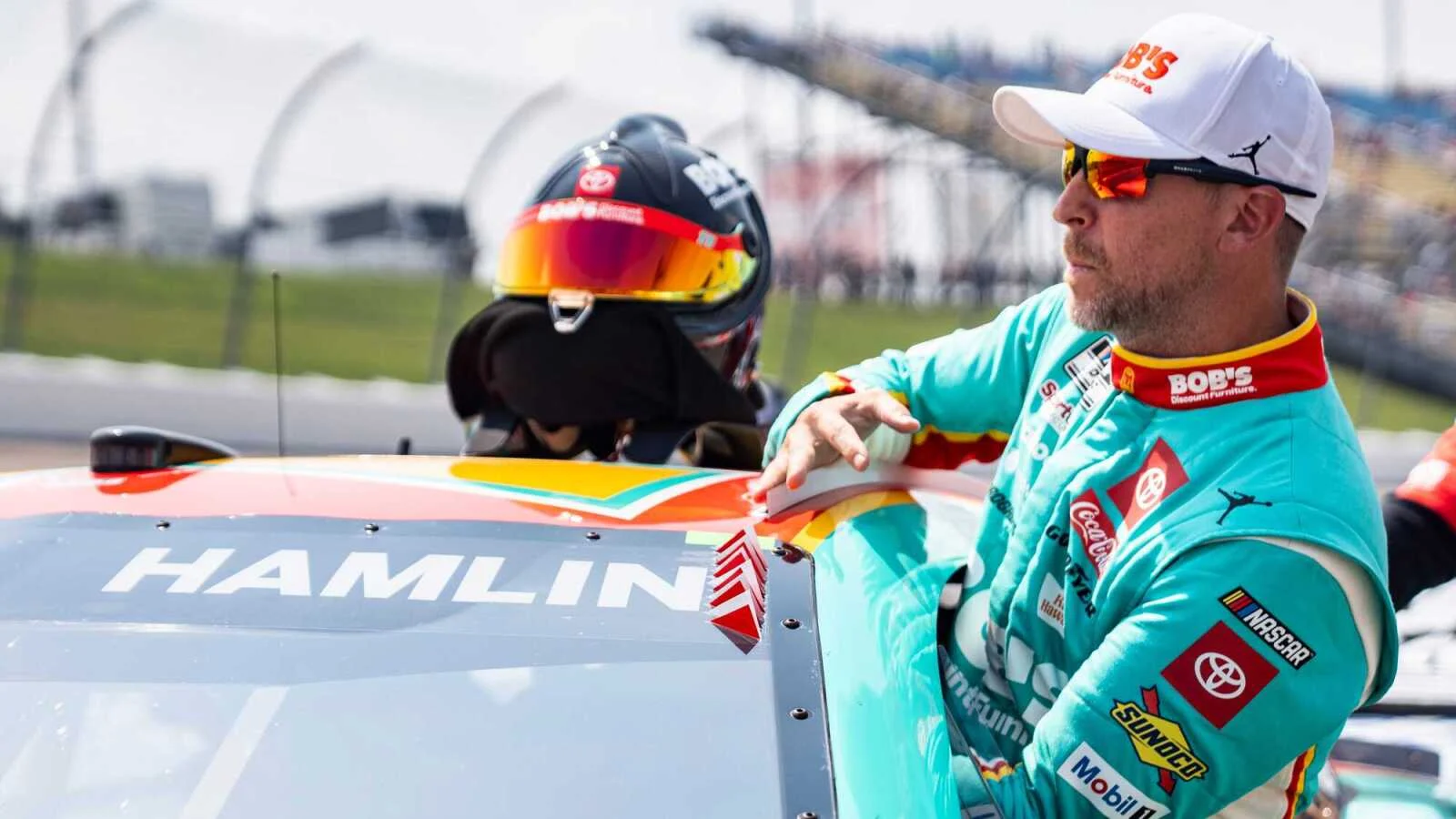The ongoing Denny Hamlin Next Gen car controversy intensified this weekend as Hamlin unexpectedly supported Kyle Petty’s comments defending the vehicle, but underscored what he called a fundamental issue affecting NASCAR since 2022. The discussion unfolded at Richmond Raceway, where Hamlin recognized both the merits and the challenges posed by the divisive Next Gen car.
Kyle Petty’s Stand on the Next Gen Car Sparks Tension
Since its introduction in 2022, NASCAR’s Next Gen car has remained at the center of heated discussions among drivers, teams, insiders, and fans. Critics have continually pointed to its perceived shortcomings, especially around passing opportunities, competitive parity, and safety. Despite this, Kyle Petty recently challenged detractors, urging patience as the car continues to develop and emphasizing NASCAR’s readiness to address concerns. According to Petty, the Next Gen car represents a technical platform that is still evolving.
However, not everyone in the NASCAR community agreed with Petty’s defense. Many observers felt his statements downplayed more significant, underlying problems that have frustrated established drivers and loyal fans since the new era began. This growing divide within the sport brought Denny Hamlin’s opinion into sharp focus during the Richmond weekend.
Denny Hamlin Offers a Nuanced Perspective at Richmond
Hamlin, widely regarded as one of NASCAR’s most vocal personalities, provided a considered response to Petty’s perspective at Richmond Raceway. While Hamlin is well-known for his critical stance toward the Next Gen vehicle, he expressed some agreement with Petty’s viewpoint, particularly regarding the evolution of stock car racing and the car’s technological progress.

“I mean, he’s right in that sense certainly, that you know it’s not a stock car you’re talking about,”
—Denny Hamlin, Driver
“We used to just bring a car off the street and turn into a race car. Obviously, those days have been gone for decades now. So he’s definitely partially right.”
—Denny Hamlin, Driver
Hamlin admitted that Petty accurately described the car’s ongoing evolution and its ability to create parity among competitors. Yet, Hamlin immediately brought attention back to what he considers the biggest flaw: the way enforced competitive equality has stifled racing excitement. He explained how, at the start of the Next Gen era, the differences between top and bottom teams fueled dramatic contests and allowed more passing, adding suspense to the events.
Now, Hamlin believes that progress and innovation have been so restricted that the field has tightened excessively. As a result, even the most successful teams struggle to overtake slower cars, which has led to predictability and a lack of thrilling moments on track—something fans and stars alike have noticed and lamented.
Hamlin Breaks Down NASCAR’s Parity Problem
Delving deeper into the problem, Hamlin described how the nature of competition has shifted since the car’s introduction. He discussed how, in the beginning, the racing saw flashes of excitement because there was enough disparity in performance between the fastest and slowest teams to allow for overtaking battles.
“We’ve had exciting moments in this car and I don’t disagree with that. The issue is that it happened early in the Next Gen era, where there was so much disparity between the fast cars and the slower cars.”
—Denny Hamlin, Driver
“Now, everyone, over time, there’s been no development for years and years now. Nothing’s really changed. The field has just tightened up. You can see it from the fastest to the slowest.”
—Denny Hamlin, Driver
To illustrate the point, Hamlin referenced data from Richmond Raceway. When the Next Gen car debuted, there was a gap of about seven-tenths of a second between the quickest and slowest qualifiers. This difference gave faster entrants the potential to move forward through the pack. Now, as teams have converged in performance, that gap has shrunk to nearly three and a half tenths, making it much more difficult for even the fastest cars to pass at tight circuits like Richmond, where a two- or three-tenths gap is required for a single overtaking maneuver.
“That means that the first-place fastest car is going to struggle to pass the 25th if he just gets put behind him. So that’s the fundamental part that is going to be tough for us to kind of overcome unless, you know, we have some major changes,”
—Denny Hamlin, Driver
This compression of the field, driven by limits on technical development, has resulted in racing that some describe as processional, where overtaking is rare and holding track position has become the most important factor. This has not only frustrated many of NASCAR’s stars—including drivers like Hamlin—but has also prompted fans to question when or if the action-packed racing of previous decades will make a comeback.
NASCAR Faces Deepening Challenges Over Next Gen Car
The situation poses significant challenges for NASCAR leadership and teams alike. The intended goal of achieving parity across the field has succeeded in creating closer competition, but it has also made it tougher for standout talent to shine and for drivers to advance through the pack, especially on circuits where minor speed differences are crucial.
The Denny Hamlin Next Gen car controversy reflects a broader debate within the sport about the balance between technology, excitement, and equity. As drivers, insiders, and fans await possible technical changes or new solutions, the focus remains not only on the mechanics of the Next Gen car but also on NASCAR’s ability to recapture the unpredictable and dramatic races that defined its past. The next steps—whether new technical rules, development allowances, or fundamental philosophy changes—will shape the future of competition for teams, stars, and the loyal fanbase alike.


